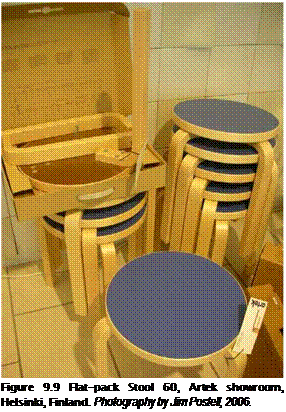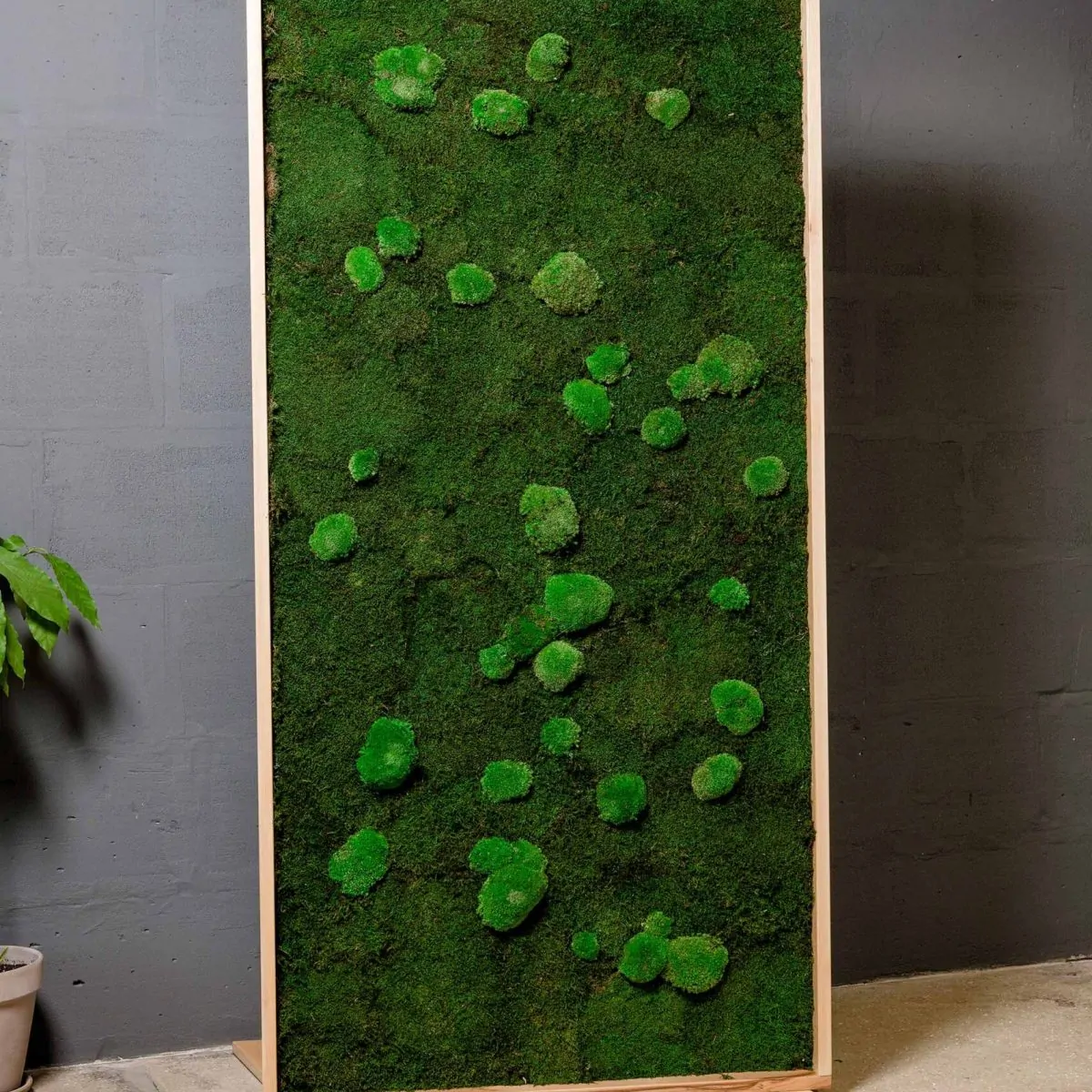Green design was defined in Chapter 6 as being more complex and inclusive than sustainable design. Consequently, green marketing encompasses more than promoting the sustainability of a product. It is an opportunity to market how furniture is produced (socially and technologically), how it is distributed, how it might be considered reusable or recyclable, and how it might eventually biodegrade. It is a chance to market the company behind the product for leadership in green design.
Fewer companies today are packaging their products with polystyrene, and more are using biodegradable cardboard and flat-pack distribution methods in response to concerns over chlorofluorocarbons (CFCs) that are produced in the production of polystyrene (Figure 9.9). How a product is distributed affects how green it is.
Size, weight, packaging, distance, and distribution costs are significant factors that affect the cost and resources needed to bring a product to market. Although GebrQder

 Thonet first distributed chairs disassembled in the mid-1800s, flat-pack or knock-down furnishings became widely accepted by the public only in the 1960s. Gaetano Pesce’s vacuum-packed UP series and Il Sacco, the original beanbag chair designed by Piero Gatti, Cesare Paolini, and Franco Teadoro, greatly reduced the distribution cost of off-the-shelf furniture.
Thonet first distributed chairs disassembled in the mid-1800s, flat-pack or knock-down furnishings became widely accepted by the public only in the 1960s. Gaetano Pesce’s vacuum-packed UP series and Il Sacco, the original beanbag chair designed by Piero Gatti, Cesare Paolini, and Franco Teadoro, greatly reduced the distribution cost of off-the-shelf furniture.
How a product is fabricated also determines how green it is. For example, the possible future ban of lead in soldering has pushed many firms to develop new techniques for joining metal. Various metal components are currently being powder-coated rather than spray-painted. Improved processes of finishing furniture can reduce environmental hazards; consequently, furniture production is continually evolving and, whenever appropriate, is being marketed as green design.
Targeting products that are green involves promoting furniture that:
■ Produces low levels of VOCs
■ Uses materials that are formaldehyde free, biodegradable, or renewable
Green products are often priced higher than conventional goods, but their life cycle may be longer and they are often cost efficient in the long run. The reality, however, seems to be that while people are willing to pay more for a green product, the degree of "how much more" is marginal.



